Big Bend National Park – A Vast Desert Wilderness
Big Bend, which provides a natural border between the US and Mexico, is a vast wilderness in Southwest Texas that includes the entire Chisos Mountain range and a large portion of the Chihuahuan Desert. It provides numerous opportunities for hiking, kayaking, solitude, star gazing in some of the best skies in North America, and observing desert wildlife. We spent 1.5 weeks in Big Bend during the winter of 2019 and truly enjoyed it. The park has a little bit of everything, including cell service and NPS-provided wifi in the Chisos Basin area! Below are a few of my favorite parts of the park.
Chisos Basin
Many of the park’s best hikes start and end near the Chisos Basin lodge and visitor center. This area is higher elevation, so it’s chillier than other areas of the park, but it gets you up in the mountains. We stayed in the campground, which cost $14 per night, and hiked the half mile path to work on picnic tables outside the visitor center each day. NPS provides wifi and our AT&T phones picked up cell service from Sprint.
My two favorite hikes started from this location: Emory Peak, which lets you bag the second highest summit in Texas and includes a somewhat nerve-wrecking scramble to the peak; and the Window Trail, which is an easy 5-mile trail that takes you through varied scenery while winding you toward the mouth of a canyon and its waterfall high in the Chisos mountains. This creates the ‘window’ that everyone photographs from the visitor center.

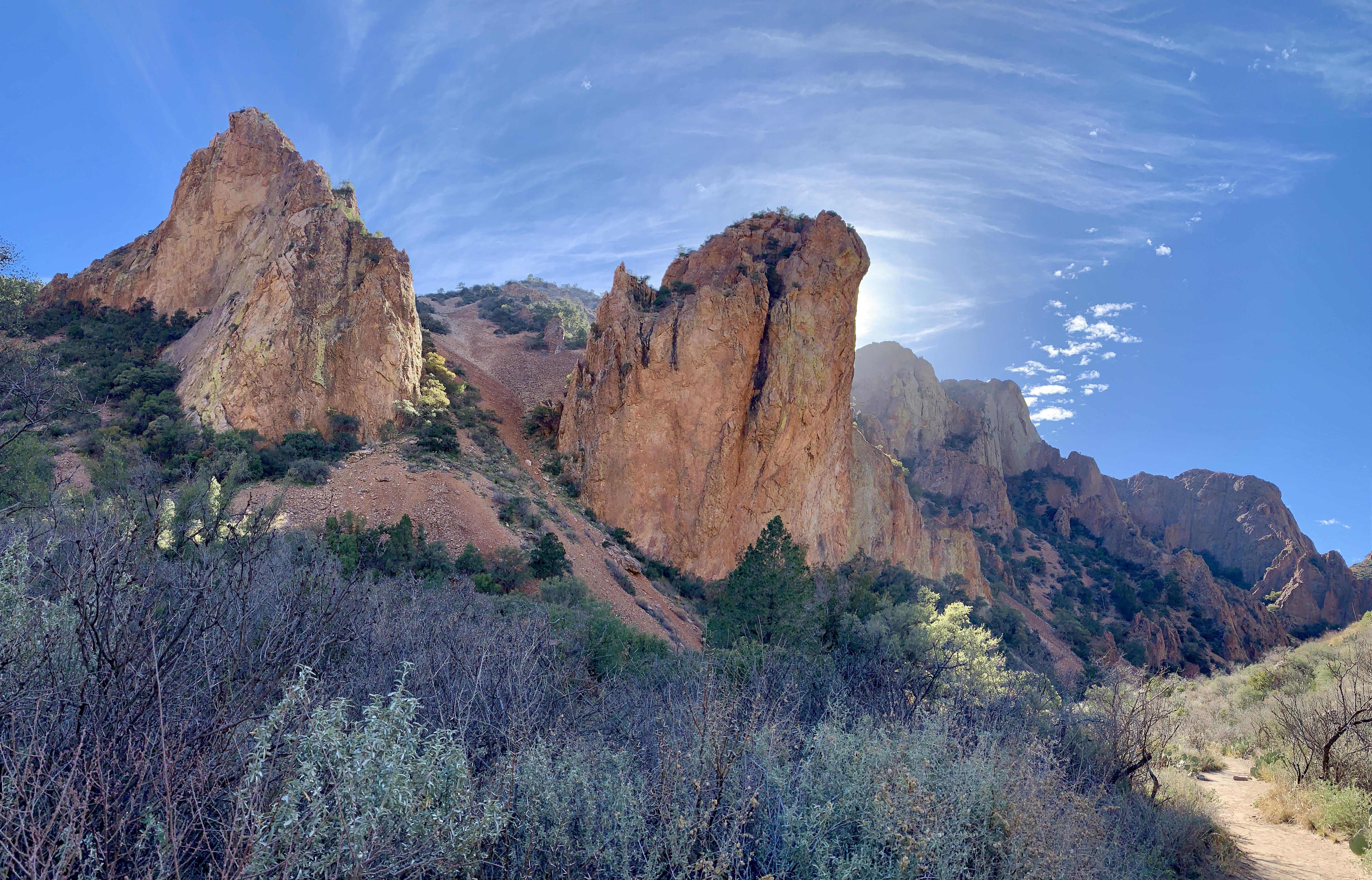
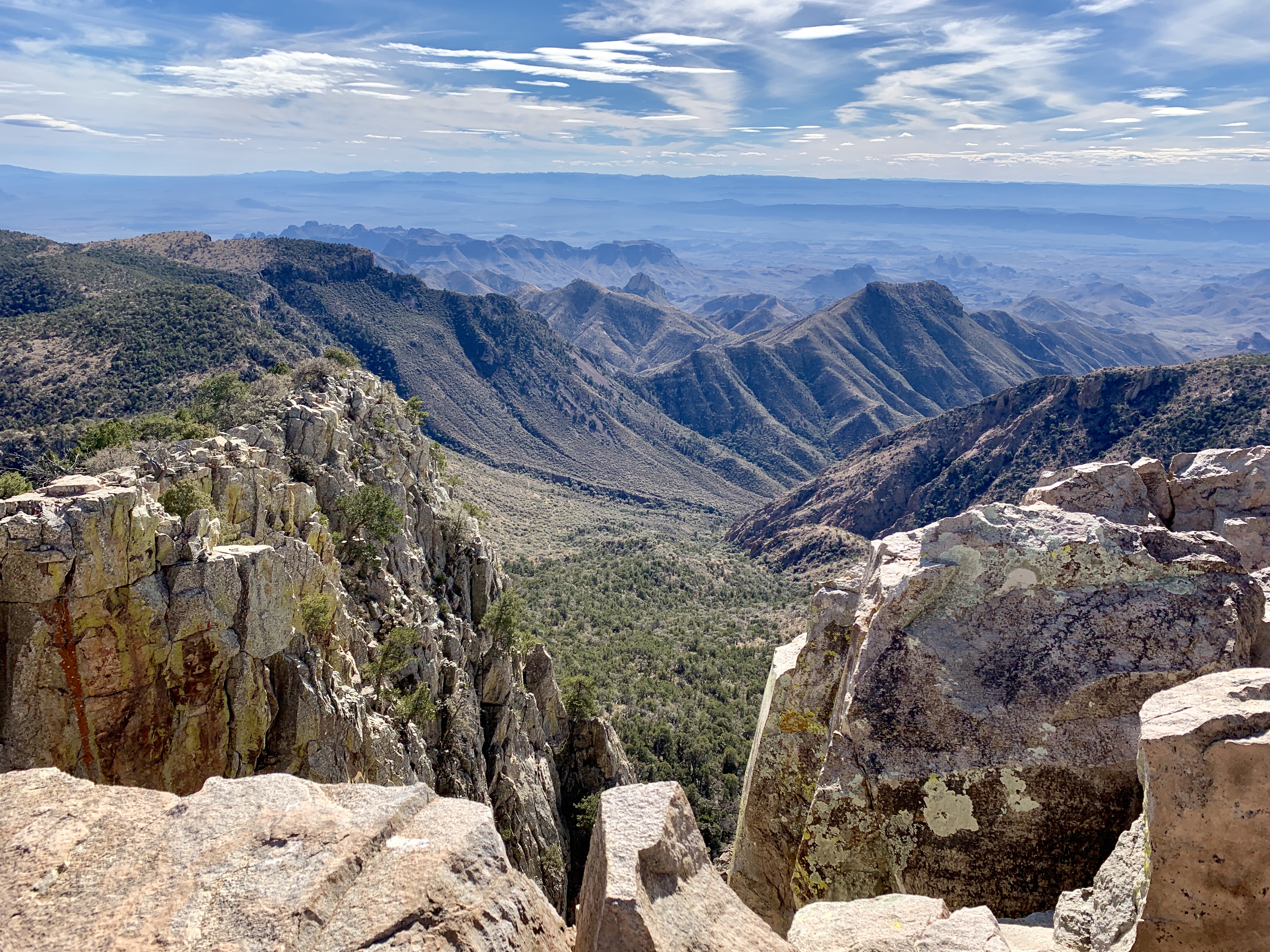
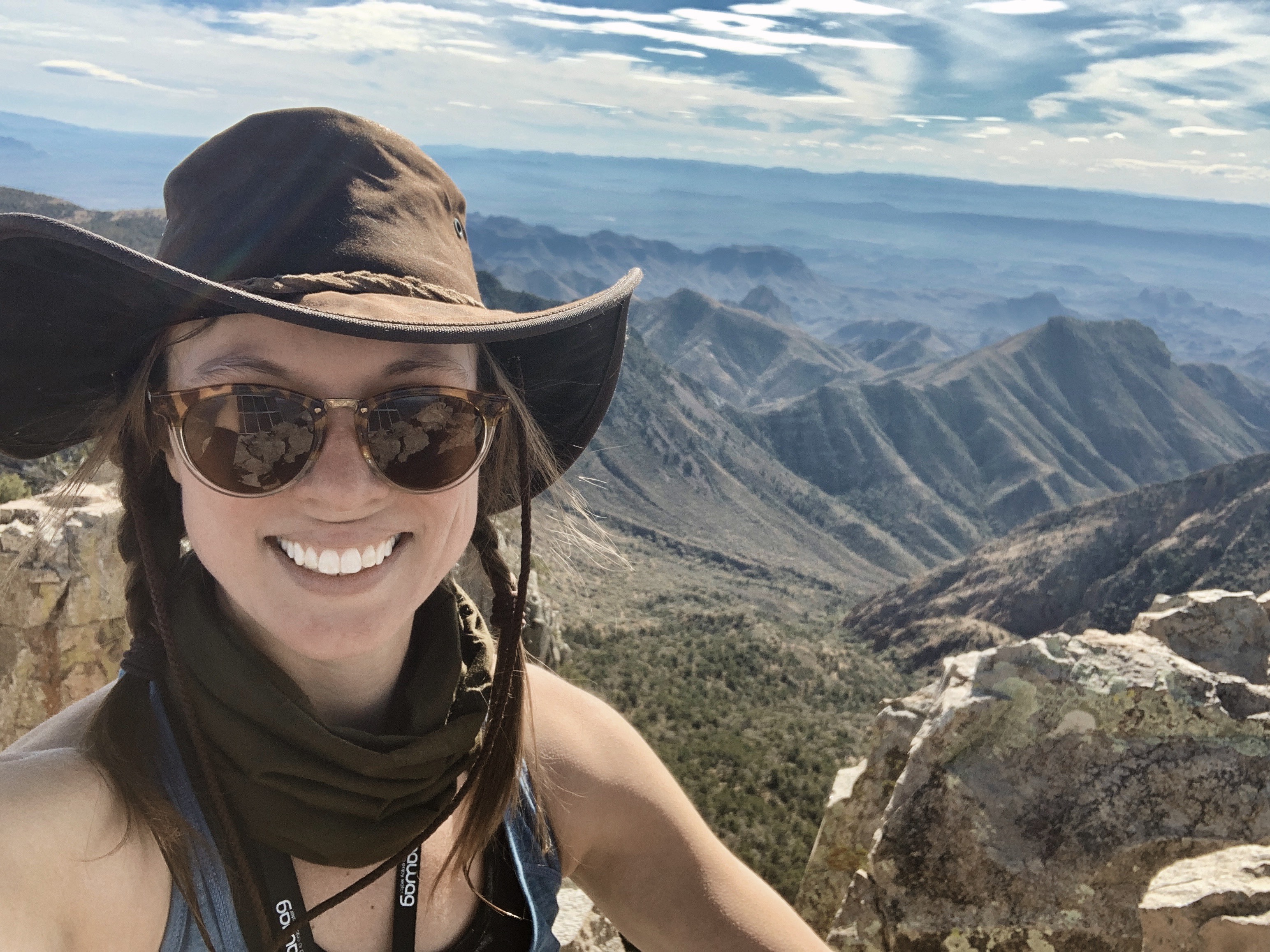
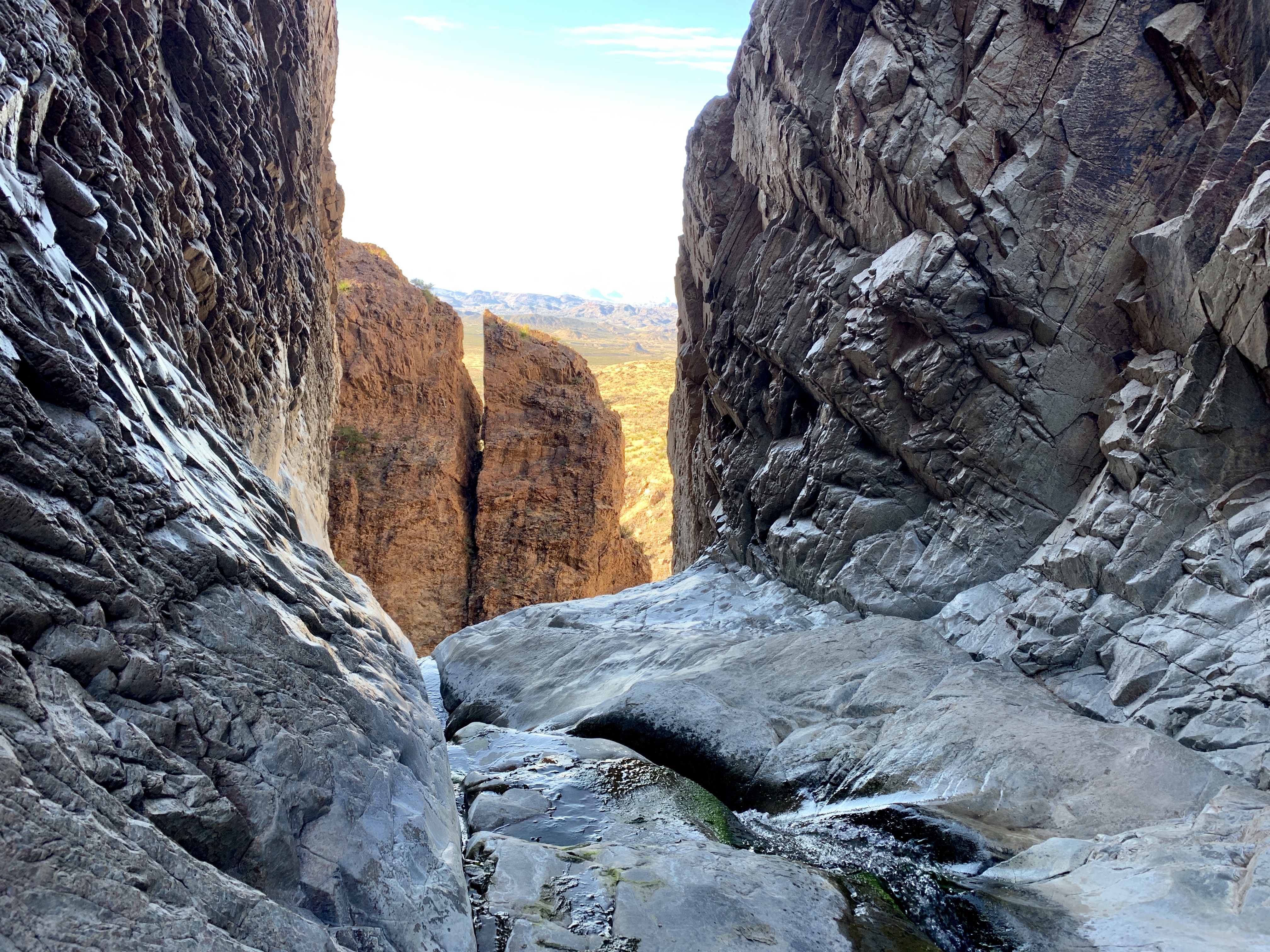
Kayaking the Rio Grande
We spent 2 days kayaking the Rio Grande. The first day, Patrick and I put in near Santa Elena canyon and paddled upstream toward the canyon. This was tough as the current was strong and the water was low, so we didn’t make it much more than 1 to 1.5 miles. The second day, Patrick kayaked while I hiked Emory Peak. He put in at a backcountry campsite near the river then floated 12 miles downstream and alighted near Boquillas Canyon. This was an easier paddle, but it was difficult to know where to exit the river, so it’s really easy to miss your exit point and end up far downstream. He had to carry the kayak a quarter mile uphill to make it back to the parking area too. So, it’s worth kayaking the Rio Grande, but be warned that it isn’t easy and you need to really understand the geography and have good maps before doing so. If you end up miles downstream from your pickup point, your only option is to walk back with the kayak. And your phone won’t work to call anyone. To kayak the Rio Grande, you need to obtain permits from a visitor center.
Fun fact: The river is actually a separate national park called Rio Grande Wild & Scenic River.
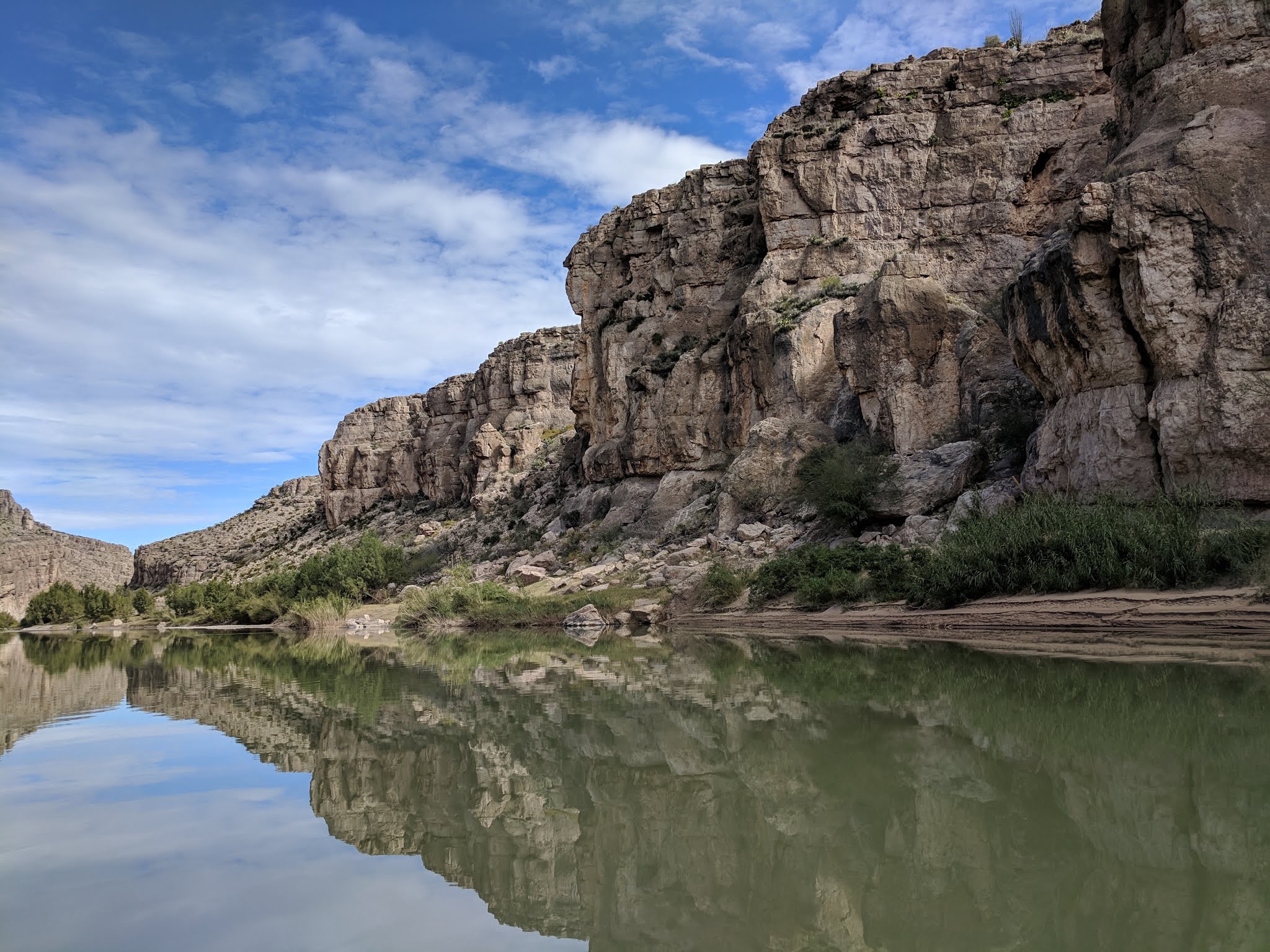
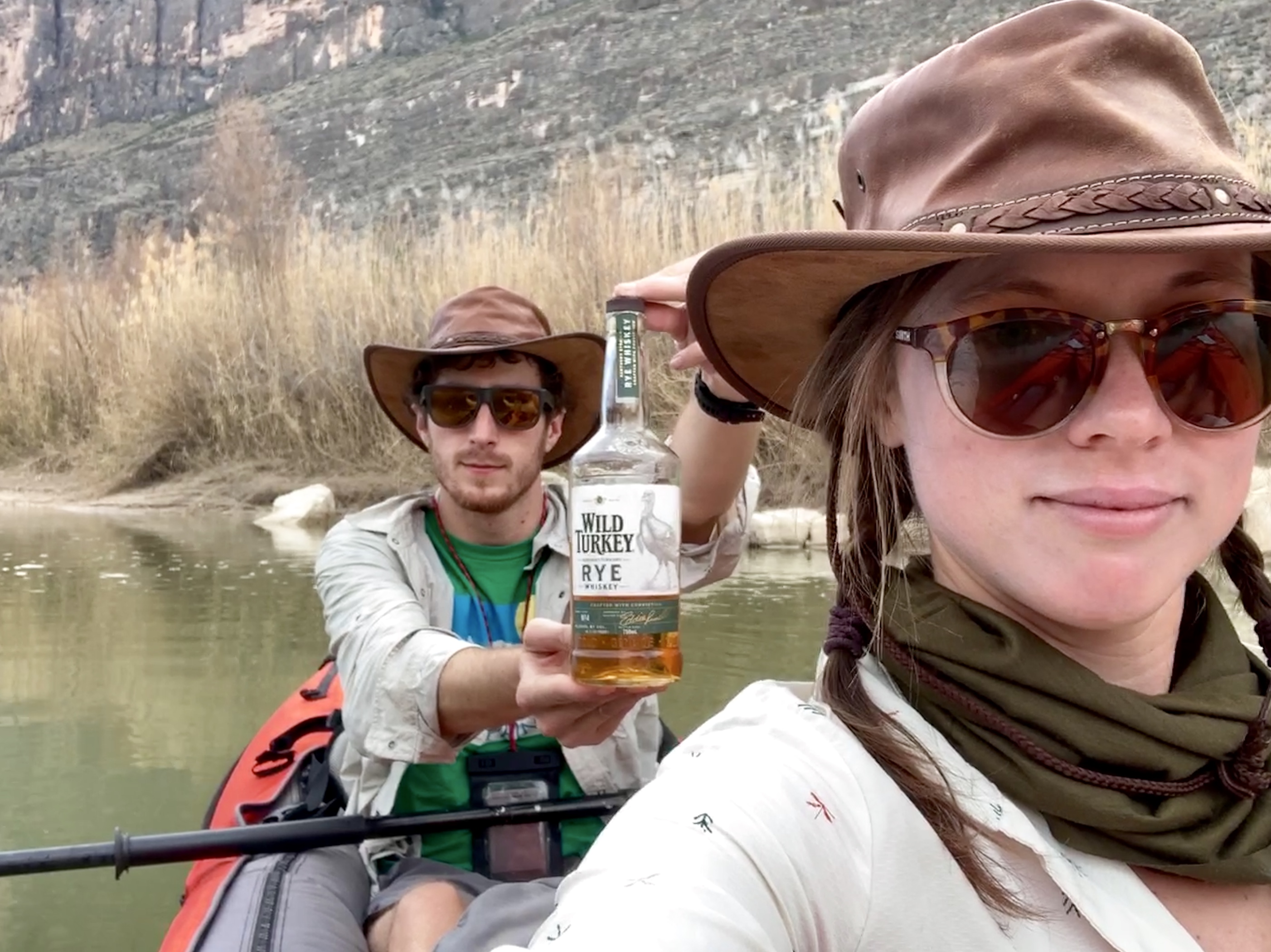
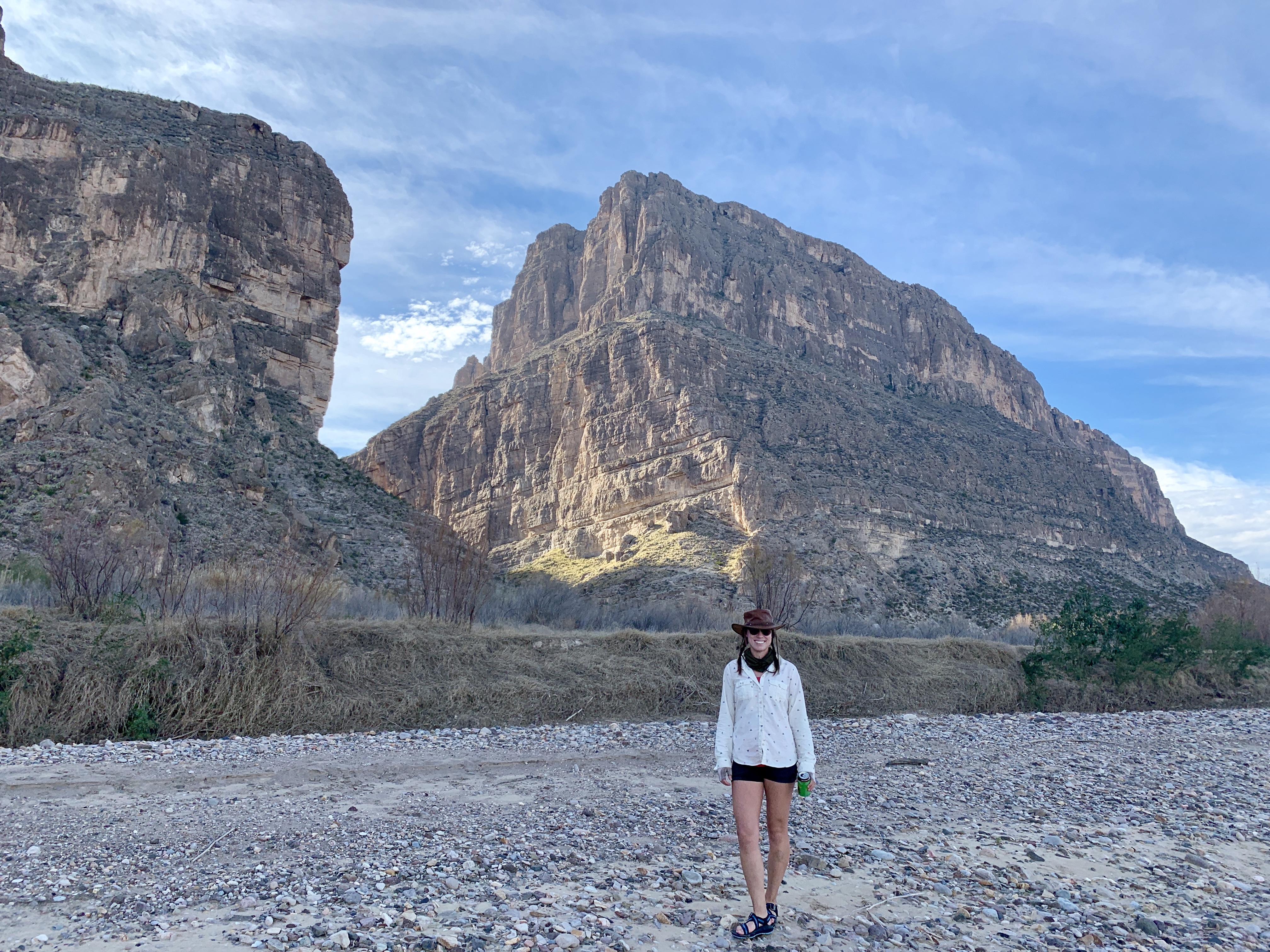
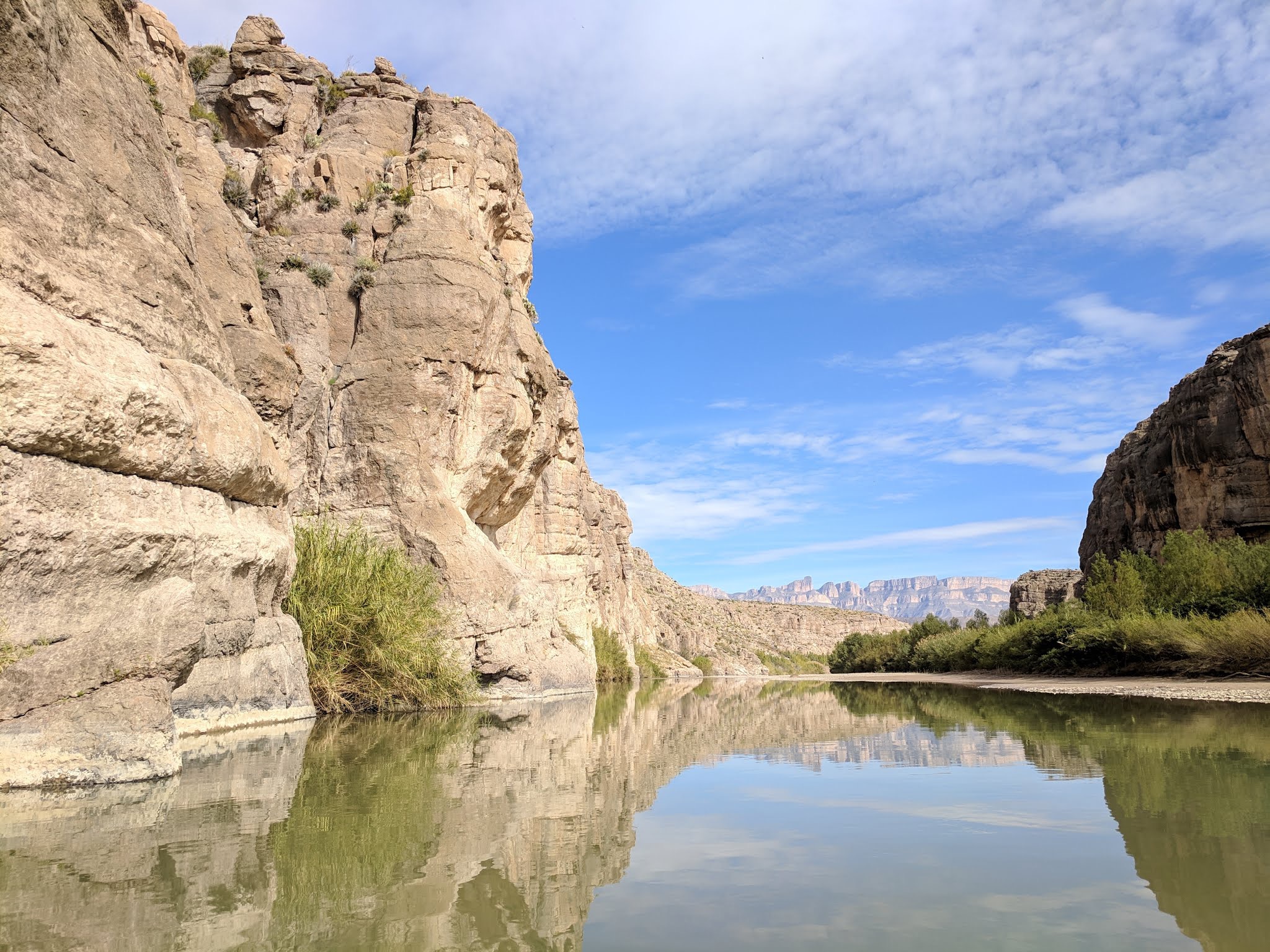
Dispersed Backcountry Camping in Big Bend
There are lots of opportunities for dispersed roadside camping in Big Bend, which is somewhat rare for parks in the lower 48 states. Two other ones that allow this are Death Valley and Canyonlands. We chose to do primitive roadside camping in the backcountry. To do this, we obtained a free permit from the visitor center and were assigned a campsite in Paint Gap. It was gorgeous, and a fun area to hike and explore.

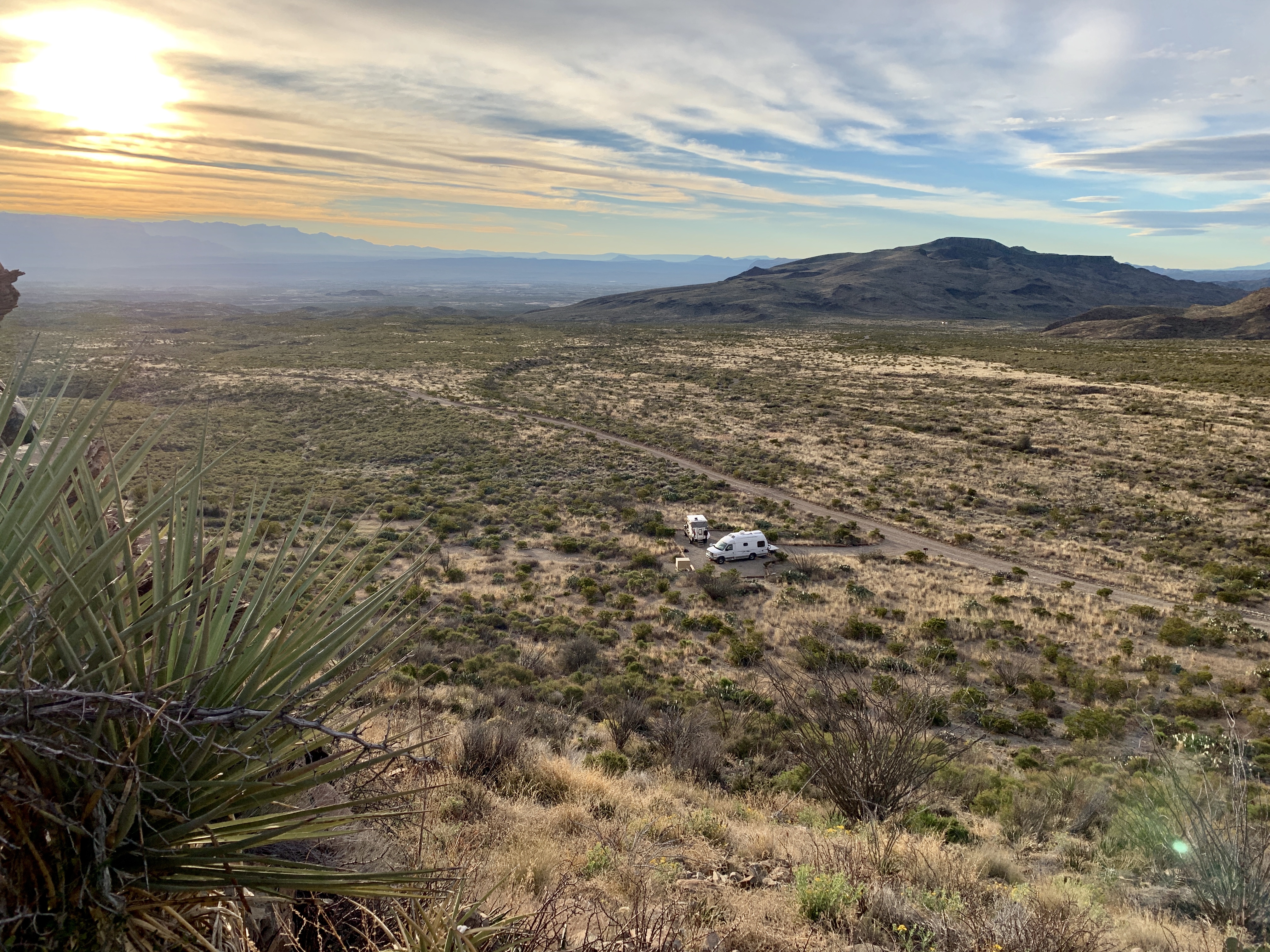
Boquilla Hot Springs
Unfortunately, we did not make it to the Hot Springs in Big Bend. However, my parents did. You can hike a quick trail to an area in the Rio Grande where natural springs emerge and form hot pools. There you can soak in the natural ruins of a former hot springs resort. This is a real treat during colder months!

